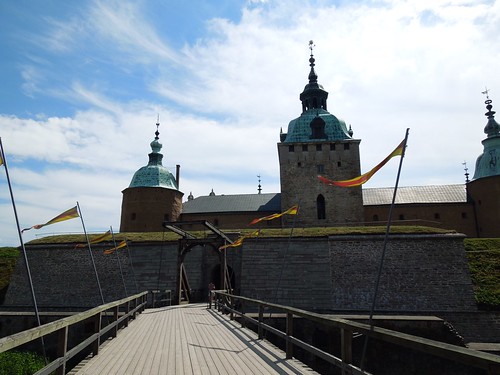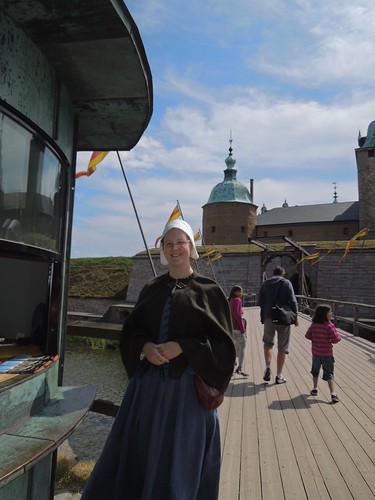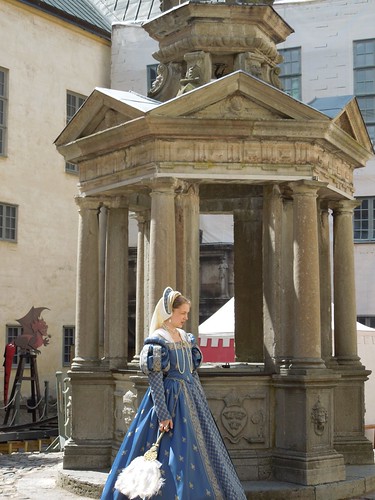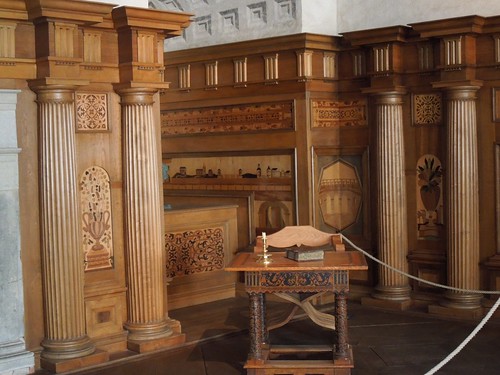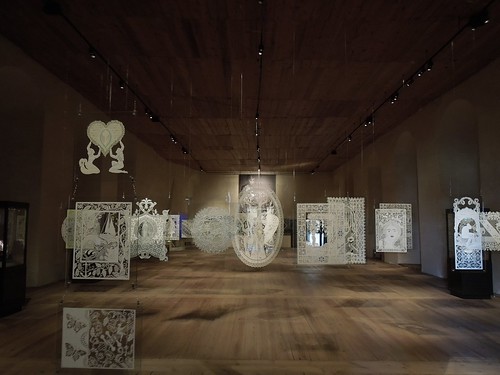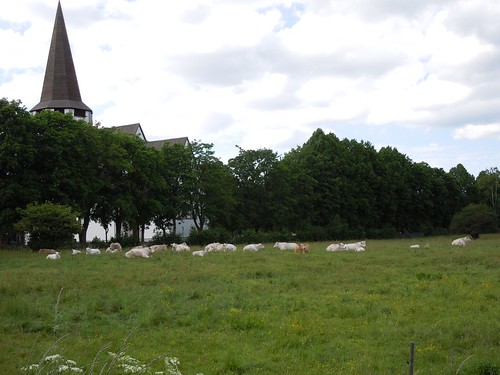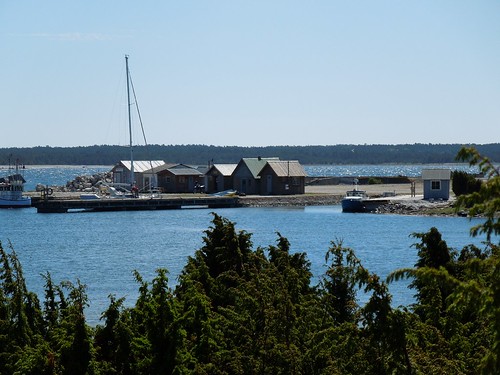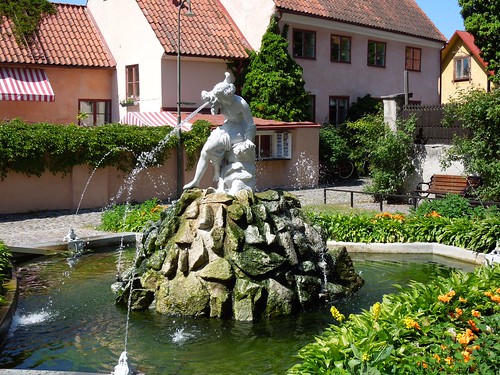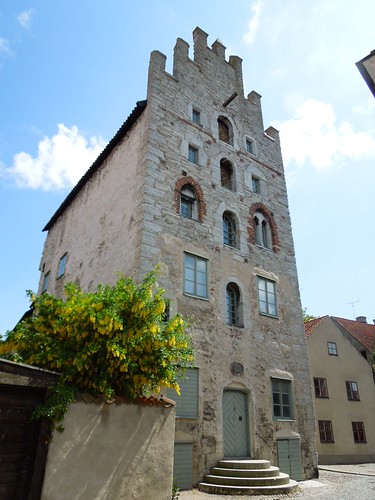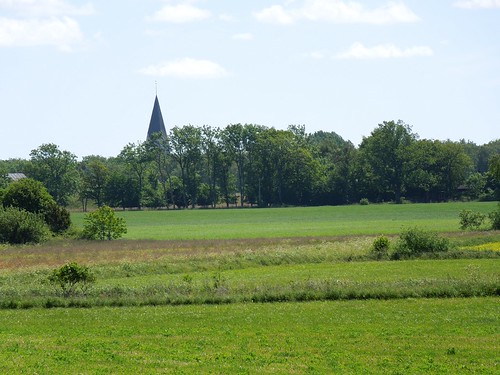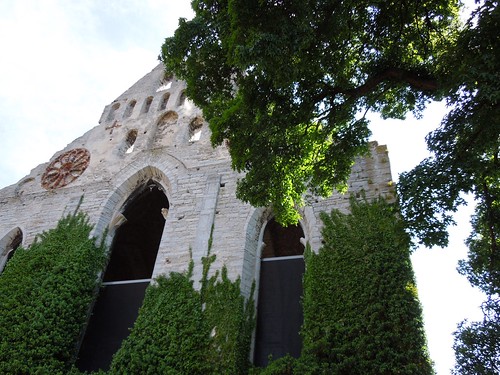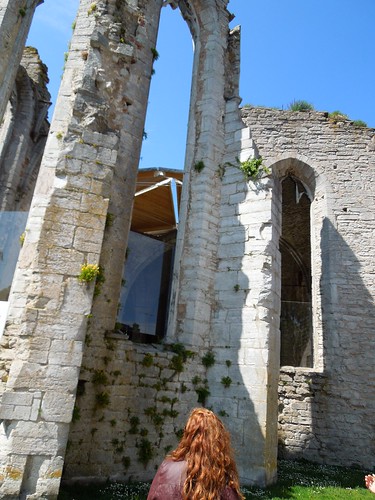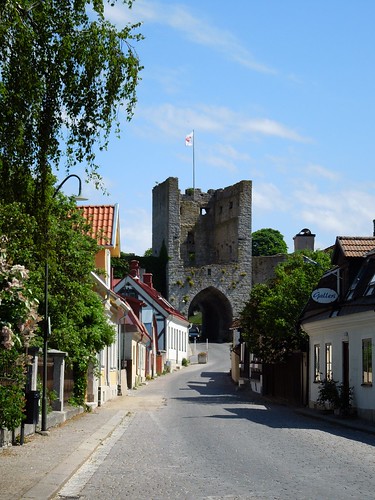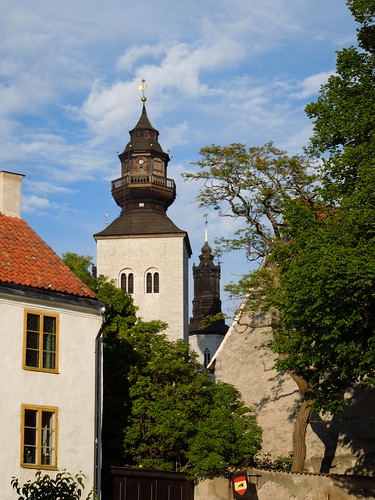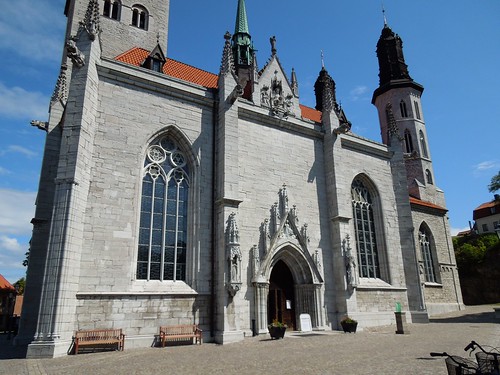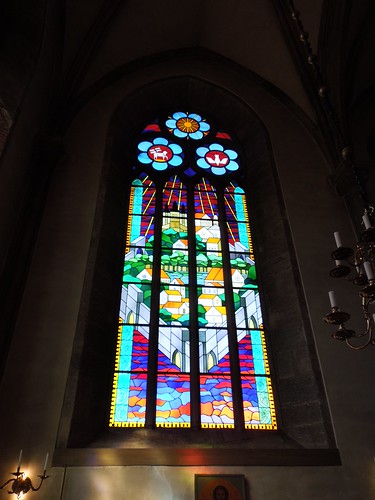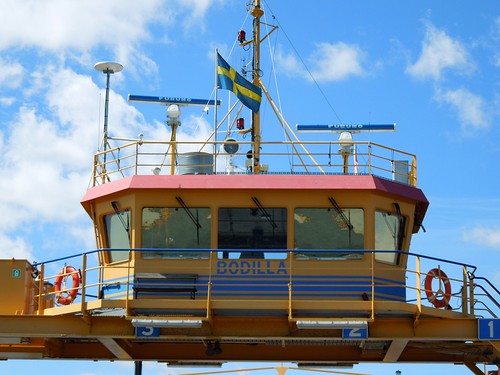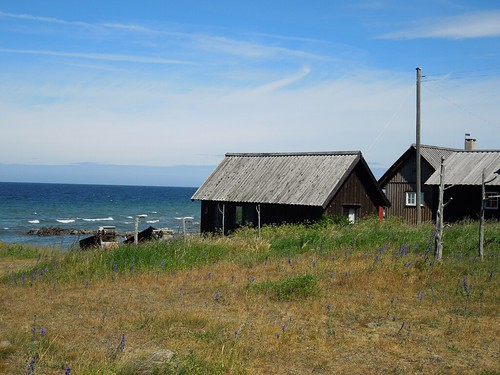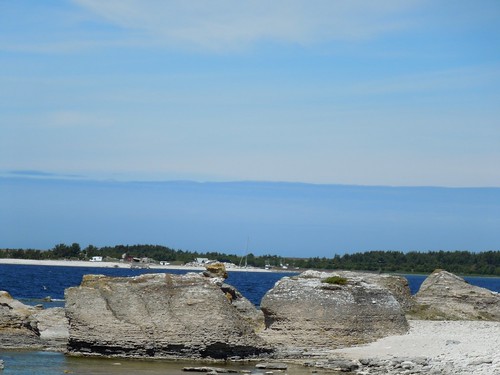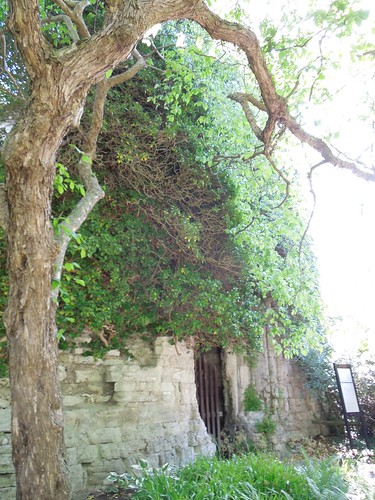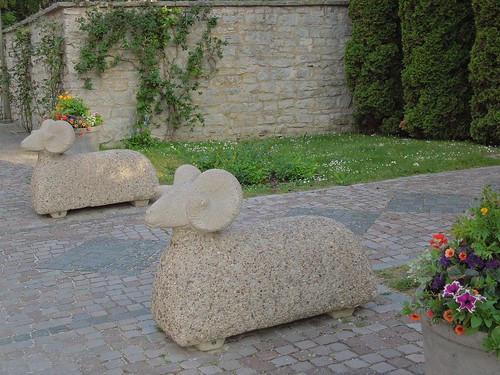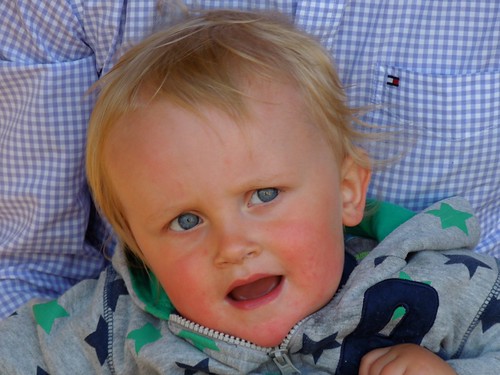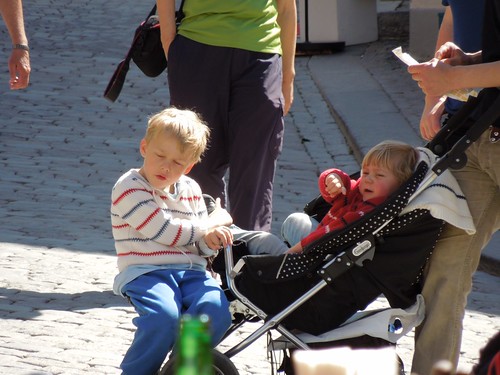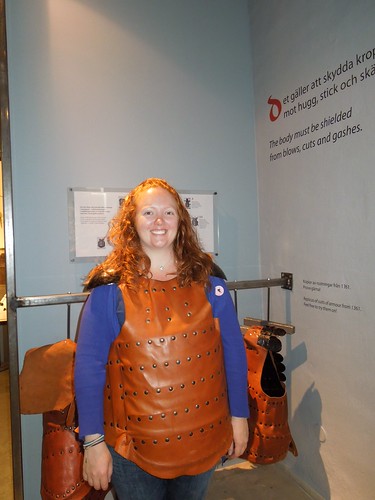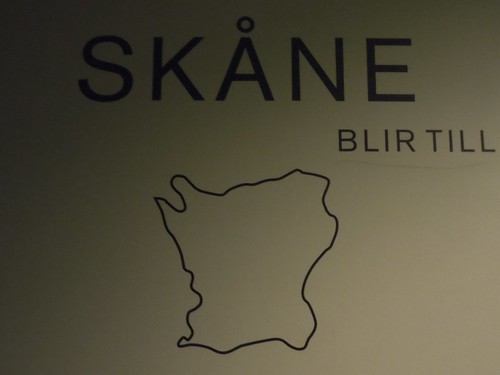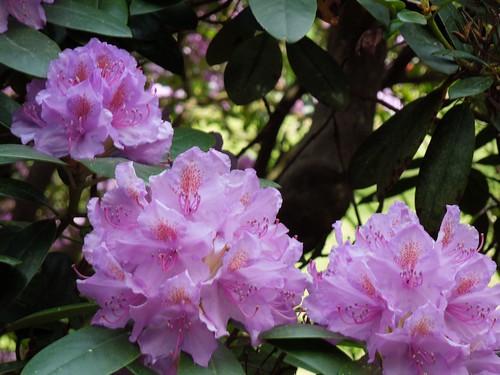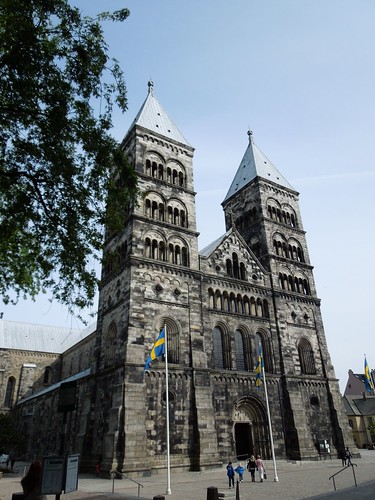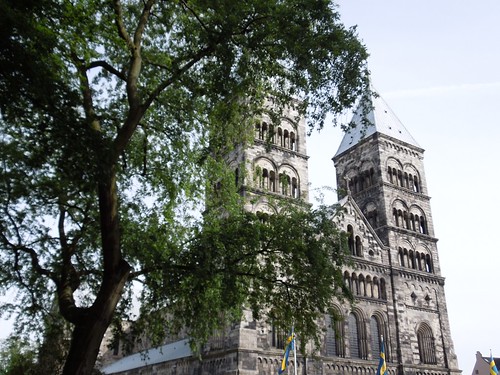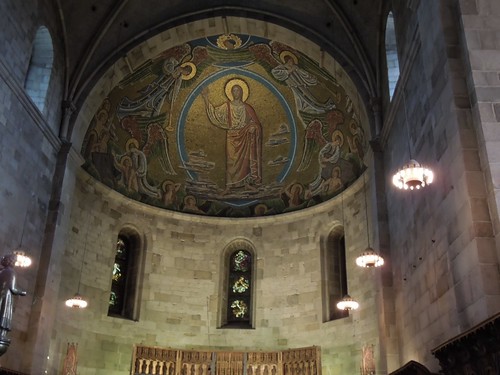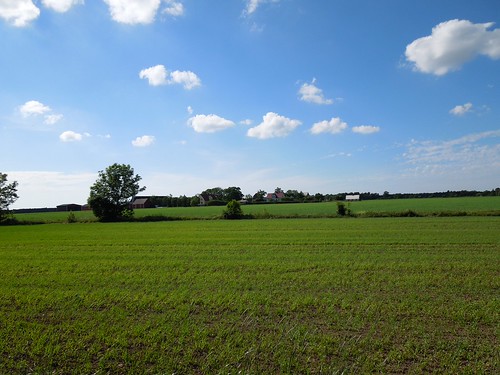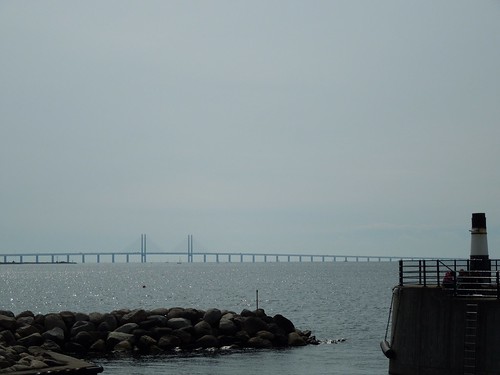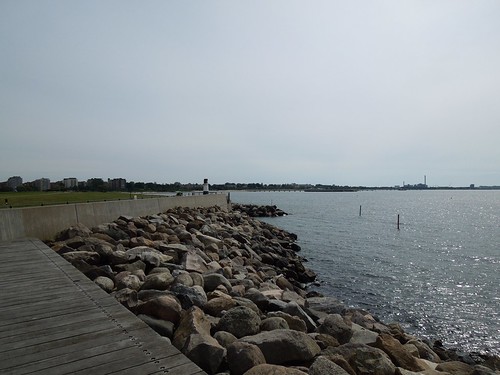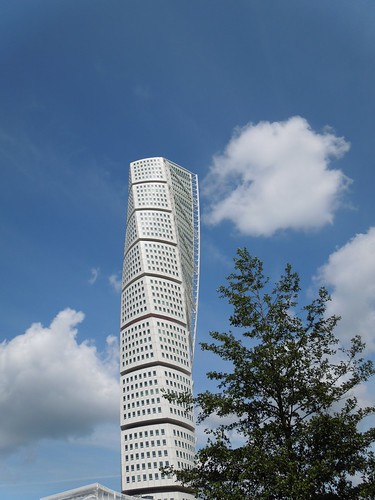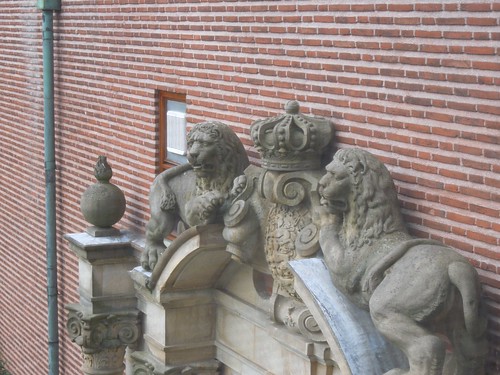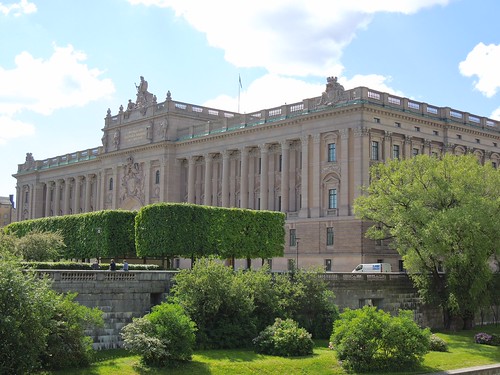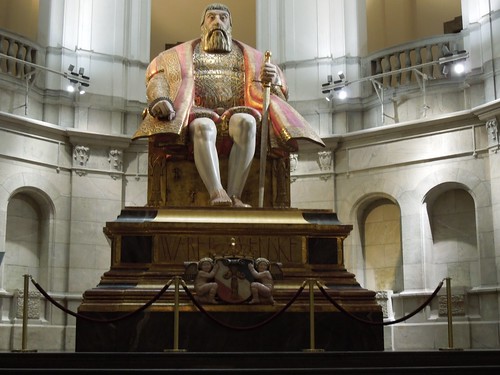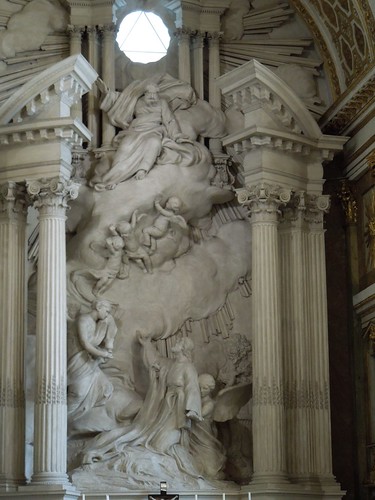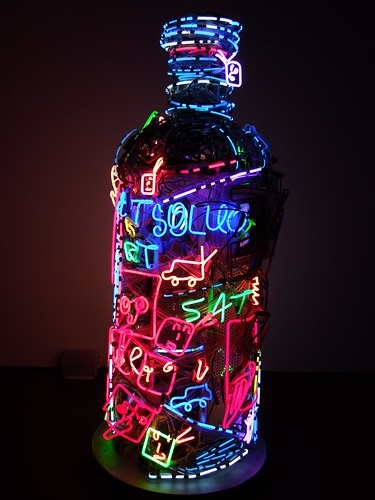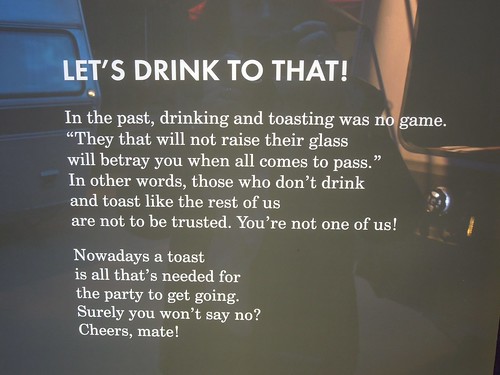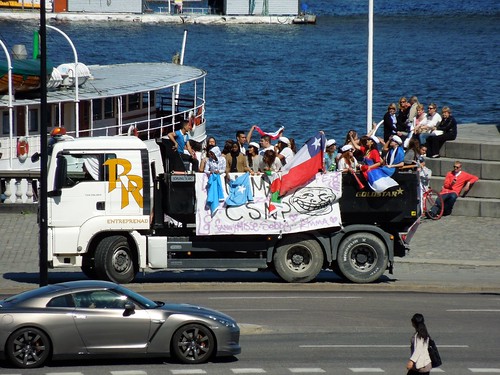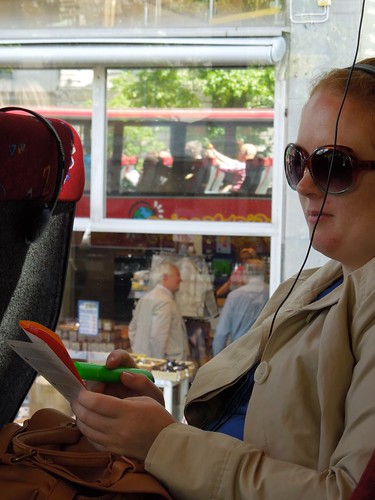We approached Sweden from the South in the area called Skane (Skaneh). The ancient province in the southwest, the "chateau country" because of all of the French-like castles that still dot the landscape of undulating fields. The light is so incredibly vivid at this time of year, that for miles one can see white windmills, black and white churches, and a background of yellow rape, bright red poppies, and velvet green meadows. Truly, the "heart of the nation". Sweden is about the size of California, with a population density of only 48 people per square mile - ample room for 9 million people.It is a land of lakes and forests, mountains and meadows. Sweden possesses 1,140 historic fortresses,2,500 open air runic stones,and 25,000 protected Iron Age graveyards - Stockholm has 10 royal castles.
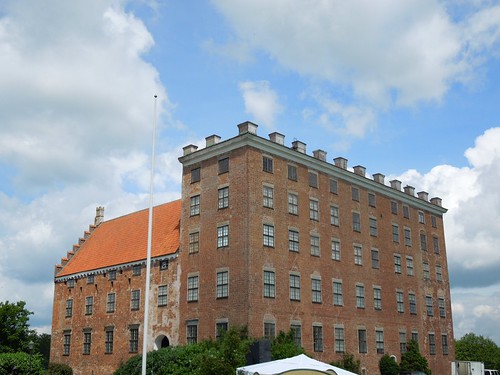
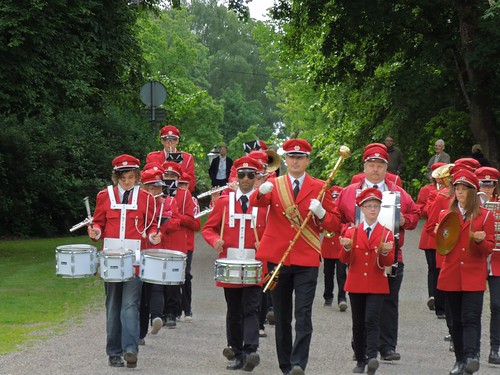
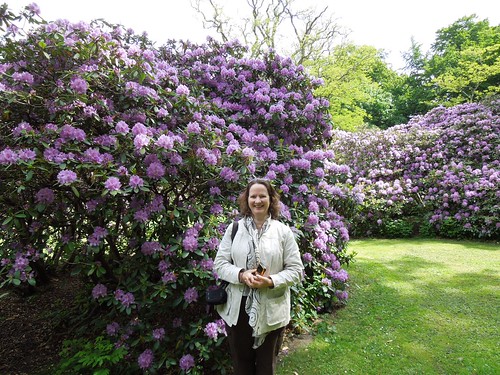
We have several genealogists in our family - on the Swedish side, that is. My father liked to brag that he was 100% Swede. His grandfather came over from the area, Skane, and settled in Western Pennsylvania, an area that looks identical to Southwest Sweden. We can trace our family history back 10 generations and were reminded of that fact at every family gathering since I could remember. My mother's side of the family - the Irish, had unqualified good looks, incredible singing voices, and wit that was so sharp, one needed a program to "keep up". But, alas, we weren't sure where our great grandfather was born - was it County Kerry or County Cork?? So we sang and performed at family gatherings, and the Swedes read verse, and brought out old black and white photos of relatives from the "old country".Even though I am 50% Swede, I can identify more with the Irish side of my ancestry.
It has been very cathartic for us to be here, in the "motherland". Everytime we noted a particular activity, we would glance at one another and say "that explains a lot".
My father constantly teased my mother with terrible "Irish jokes"...when we visited the Independence day festival, we saw 4 men trying to erect a simple tent for the festivities - we both burst into laughter and said "so, how many Swedes does it take to put up a simple tent?"
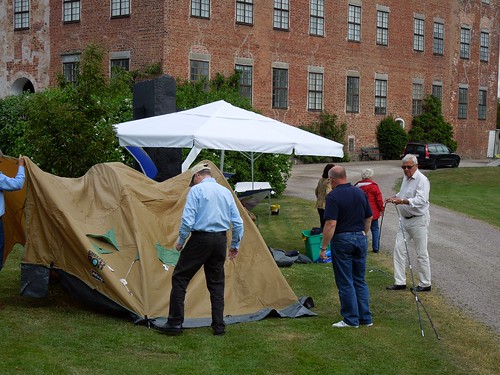
A little Swedish history...Sweden is one of the most paradoxical nations . An essentially conservative country, it is a leader in social welfare, prison reform, equal opportunity for women, same sex marriages, and 50% of all couples living together with children are not married. The government is a constitutional monarchy, supported by a parliament - a one chamber body. It is a full memeber of the EU, but has not adopted the Euro as its official currency. The lowest tax rate is 30% - the highest is 59%. (Note there are no deductions, so it doesn't take a lot of time to "do your taxes") It's the "cradle to grave" welfare system - when a Swede reaches 65 he/she receives a hefty pension that rises with inflation. Health care for all, a child care provision allowance, and a stipend for education. Presently 46% of the GNP is spent on welfare - more than any other industrialized country. Employers pay 41% of employee remuneration into social security and pension plans. It is very difficult to create wealth here. So therefore, a large percentage of the country is elderly. The generation that has peak earnings power, lives out of the country.
Sweden remained neutral during the big wars. Perhaps because most of their past was spent in warfare with the Vikings, Norway, Denmark, Finland and Russia;constantly waring over borders. Sweden's neutrality brought ill feelings to its neighbors - Norway and Finland. Nazi troops marched across Sweden and flattened Norway. Dag Hammarskjold , secretary-general of the UN from 1953 - 1961, did a lot to repair Sweden's image. One chilling chapter in Sweden's history 1935-1976, there were 60,000 of its citizens sterilized, involuntarily, due to inferior genetic characteristics - bad eyesight, mental retardation, and other characteristics that seemed undesirable. The law wasn't overturned until 1976. Sweden paid reparation to those who were harmed by the program.
LUND
Our first destination in Southern Sweden, and the second oldest town. It has 1,000 year old history, and is comparable to Cambridge. In 1145, when the most magnificant cathedral was erected, Lund became the center of religion, politics,culture, and commerce for all of Scandinavia. The town's medieval streets and its grand Cathedral, make it a wonderful place to visit.
The Lund Cathedral is the most perfect example of Romanesque architecture in northern Europe. Work began in 1080 and it was completed in 1145. The dramatic Astronomical Clock form the 14th century, it depicts days,weeks, and even the courses of the moon and the sun in the zodiac. Its final year is 2123 - so is that it?
Svaneholm - Castle in the Sky
We were in Lund for June 6th, which was Swedish Independence - their version of July 4th. This castle which was occupied by many aristocratic families from 1530 . The most interesting was Baron Rutger Macklean who introduced crop rotation to Sweden - now that's Swedish excitement!! The museum in the castle was interesting. The grounds had many exhibitors showing their local arts and crafts. A local colorful band preformed, along with a sound stage for contemportary music.
MALMO
Malmo is the major port linked to the Continent via Denmark. Malmo is just beginning to take on an increased sophistication. It's a vibrant city with a young vibe. Malmo "represents the Sweden of tomorrow". A contemporary tower in the Western Harbor - the "Turning Torso" , Sweden's tallest building, 54 floors, with a 90 degree twist from base to top. Santiago Calatrava (the same architect who built the new bridge over the Trinity River in Dallas), is the architect who designed the building.
Malmohus Slott - several museums in a fortress from the 15th century. The Earl of Bothwell, the 3rd husband of Mary, Queen of Scotts was imprisoned here.
The wonderful harbor and boardwalk along the harbor had many sidewalk cafes. All of the locals were walking, or riding their bicycles along the boardwalk. It was so very relaxed. An interesting observation that I made was that everyone was very relaxed, and enjoying the outdoors, and each other's company. I didn't see one person with an Ipad, Iphone, Blackberry or texting during their day off - so different from social engagements in the US.
STOCKHOLM
I love this city!! I have visited before, however it was in the winter time. Now I can see what the city looks like in full floral bloom with 20 hours of daylight!
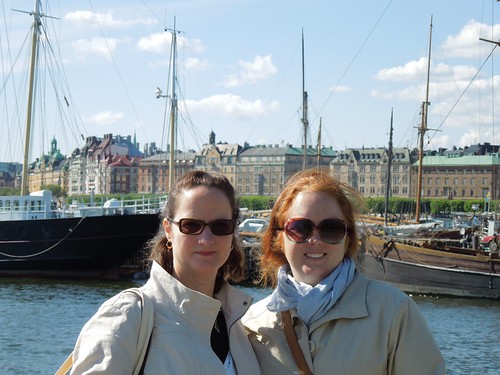
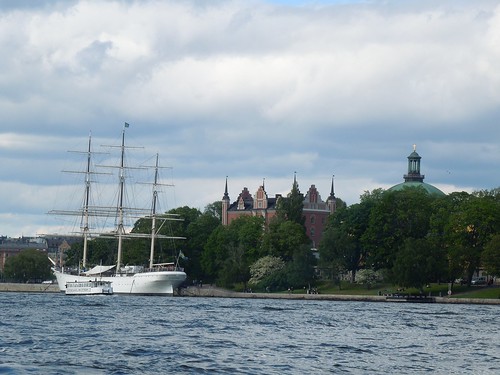

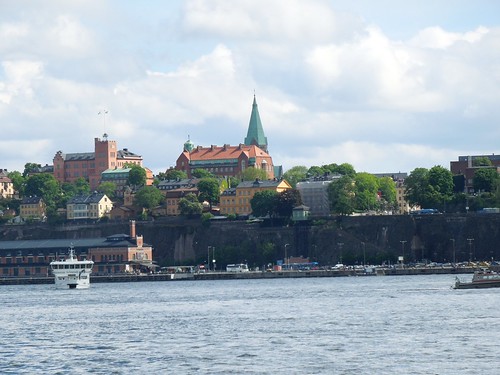
This is the most regal,elegant and intriguing city in Northern Europe. Because of Sweden's neutrality, it was saved from aerial bombardment during WWII, so much of what you see is antique. Paradoxically, Sweden is one of the world's leading exponents of moderen architecture. Some of the world's most innovative architecture appears on its fringes. Swedish fashion and design in glassware , furnishings and industrial products remain at the cutting edge. The City was built on 14 islands in Lake Malaren which marks the beginning of 24,000 islands all the way to the Baltic Sea. Bridges, islands, towers , steeples,cobblestone squares and broad boulevards with the harbour circling each pathway, makes this town beautiful. And the light - the sun is truly radient - the glow on all of the fields, flowers, sea, and colorful buildings make the city sparkle in a light that defines each color vividly. During this time of the year, near the summer solstice, there are only 3 - 4 hours of darkness. Since during the winters there are only 3 hours of daylight the citizens come out in masses to view the pleasures of the sunlight.

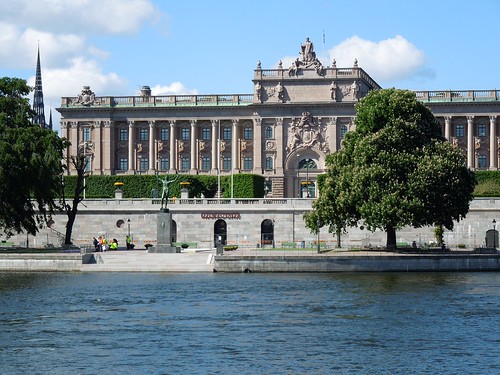
The Royal Palace & Museum - Sweden has been a monarcy for 1,000 years. We visited the Royal Palace, and were able to see the changing of the Royal Guard. They have been stationed at the palace since 1523. We also were able to attend the organ concert in the Royal Chapel. A few outstanding pieces in the palace was Queen Christina's solid silver throne, for the queen's coronation in 1650; the Treasury displays Gustav III's robe that he wore to a masked ball in 1792 where he was assignated. This was the setting for the opera by Verdi, "The Masked Ball".
Royal Warship Vasa. This site is dedicated to a 17th centuy man-of-war is the most frequently visited attraction in Scandinavia - why??? On it's maiden voyage in 1628, in front of thousands of onlookers, 15 minutes outside of the harbour, the ship SANK!! 97% of the ship's cargo, and form were restored - hence the museum. I have never really understood why the Swedes would immortalize such a failure. But, then again, I'm only 1/2 Swede.
Spiritmuseum. Absolute vodka is from Sweden, and they have devoted an entire museum to the smell, and taste of the various flavours of this vodka. There were many comical anticdotes evolving from the trials of drinking. We enjoyed this museum. After spending a lot of time seeing old masters, baroque churches, famous sculpture, it was great fun to go to a museum that displayed fun themed adventure.
We took the open topped boat around the different islands of Stockholm. We also saw Mic Jagger's yacht - The Majestic - rumour has it that he has a Swedish girlfriend. L'Wren Scott - did you know this?
The world games brought much excitement to the city
Stockholm has 12 Michelin Star Restaurants. We were able to dine at one of them.Most of the food in Stockholm is fish based. The "Scandy" chefs are very imaginative. One of the best meals that I have ever eaten was in Stockholm. The price of wine in Sweden is outrageously expensive. You can only purchase wine, beer, and spirits in State Stores. The taxes are extreme. This is why when you take a ferry from Germany to Denmark, the cars are loaded with cases of wine and beer. We were happy that we brought several bottles of Italian wine with us. A bottle of wine in Italy, for instance in a restaurant would cost $35, and the same bottle in Stockholm at a comparable restaurant costs $100.
Our ever fearless tourguide!!
To see more about eating and drinking on our trip, visit Katherine's blog texangirleatingdrinkingeurope.blogspot.com
